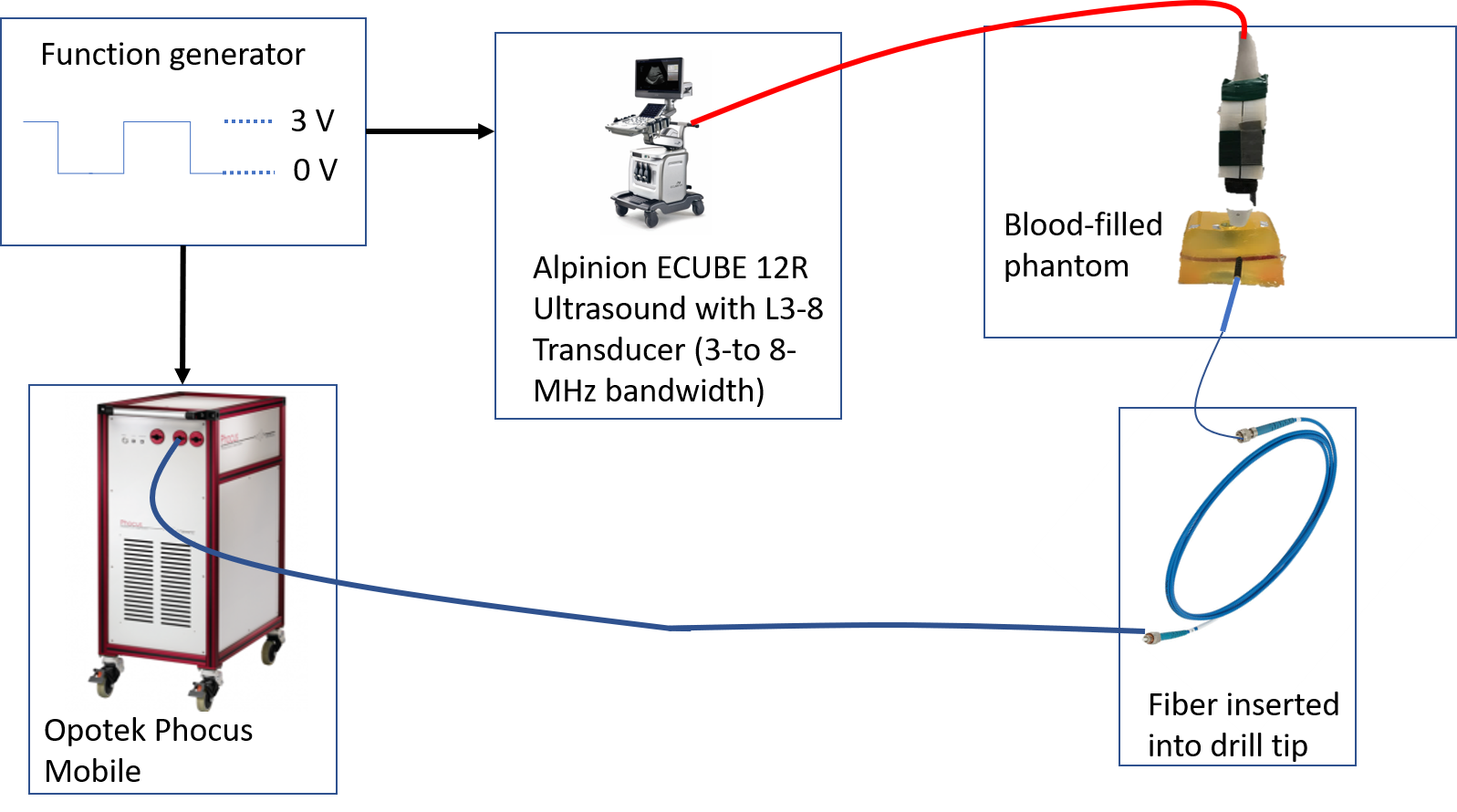Contact Us
CiiS Lab
Johns Hopkins University
112 Hackerman Hall
3400 N. Charles Street
Baltimore, MD 21218
Directions
Lab Director
Russell Taylor
127 Hackerman Hall
rht@jhu.edu
Last updated: 5/11 2:20 am
The goal of this project is do conduct proof of concept experiments with a photoacoustic surgical drill prototype. The photoacoustic surgical system is intended for use in spinal surgeries, as a replacement for fluoroscopy.
In the U.S. 150,000 spinal fusion surgeries are performed annually. These require the accurate placement of pedicle screws in the affected vertebrae. The current standard of care is to guide screw placement using fluoroscopic images. Many images must be taken throughout the procedure to prevent breaching the bone, which gives a high dose of radiation to both the surgeon and patient. Our proposed solution is to guide drilling with a photoacoustic system instead. Using a drill with an inset optical fiber and an ultrasound transducer placed on the patient's back, the pedicles can be visualized. Photoacoustic acquisition does not have the danger of exposure to radiation, and also has the potential to visualize arteries and nerves, unlike fluoroscopy.
Here is a simplified diagram of how each component in data collection is connected.

The oscilloscope generates waveforms that are sent to the laser and ultrasound system simultaneously. This couples image collection with the generation of a photoacoustic signal from the pulsed laser. The laser is coupled to the drill tip via an optical fiber, which all together creates the drill prototype. The drill prototype is used on the human bone and blood in the phantom to generate relevant surgical data. The ultrasound transducer is held against the phantom to collect the raw data. And finally, this is sent back to the ultrasound system which generates a live display of the system.
PA images will be taken as each drill tip is inserted into a pre-drilled lumbar vertebra. These will be matched to US images taken with the exact same set-up and the signal change that occurs as the signal passes through the cortical bone into the cancellous bone. The channel data will be exported for processing in order to localize the drill tip in the PA image.
| Dependency | Solution | Progress |
|---|---|---|
| Drill Prototype | use existing | solved |
| Blood | get added to IRB protocol | solved |
| Lab Access | talk to Dr. Bell | solved |
| Experiment Holder for Vertebra | find/design one | solved |
| OPO Laser | maintain one housed in lab | solved |
| MATLAB beam forming scripts | ask grad students | solved |
| vertebra with pre-drilled holes | ask Dr. Bell | have one without blood |
| CT Access/ Training | ask students with access to image for me | solved |
| CT Registration Algorithm | use Eduardo's or other existing | solved |
N/A